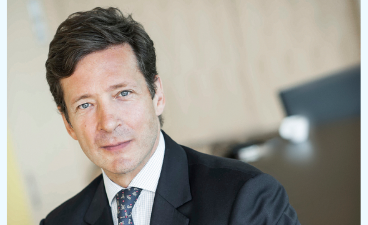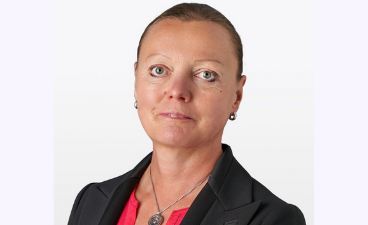The EU’s Sustainable Finance Disclosure Regulation may have been in force just a few weeks, but it’s already making waves across the asset management industry. Larger EU fund groups are well on their way to classifying their funds and many global peers are having to follow – even those based in Brexit Britain.
EY Financial Services Assurance associate partner Remco Bleijis is convinced that more change will follow. But there are significant gaps in data, expertise and experience to fill if the SFDR is to help accelerate the shift to a sustainable economy, he argues in an interview with VitalBriefing.

How important is the SFDR to the EU asset management industry?
We are already seeing the impact in the market in the EU, and it will be significant globally. A lot of big managers have already published a lot of sustainable information, but the picture is mixed. The larger fund houses have more capacity and capabilities, with bigger ESG departments; they started their SFDR implementation a year ago or more. Smaller players are trying to catch up, having waited to see what the bigger groups would do.
There is also a mixed picture at a national level. In the Netherlands, for example, a lot of funds are already being classified as Article 8 and Article 9 funds, the so-called darker green funds, while in other countries more funds are classified as falling under Article 6 for funds that do not integrate any kind of sustainability into their investment process. That could be down to local insights or fears of being accused of greenwashing.
It could also be due to the fact that the March 10 deadline applies only to the SFDR Level 1 rules – the regulatory technical standards will not be in force until January 1, 2022. We believe this is making some firms hesitant about classifying funds under articles 8 and 9, instead opting for Article 6. However, there should be a shift towards articles 8 and 9 as the year progresses.
How well are national regulators implementing the SFDR?
We’re also seeing a divergence in the market from a regulatory perspective. In some countries, there are smaller entities that have not complied with the March 10 deadline at all. They say that either they are too small or are waiting for data to comply. Some regulators have been strict about breaches, others more relaxed, allowing managers to undertake the qualitative aspects first and deal with details after the deadline.
The Netherlands has been quite strict. Ultimately, a lot depends on each national regulator’s history in sustainable finance. If they have not issued much guidance in the past, then expertise and enforcement will be limited, I suspect.
You also need to look at the national authorities. In Luxembourg, there is a strong government push behind sustainable finance. The regulatory approach will follow but will also be pragmatic. In the Netherlands, the regulator is already planning an industry-wide look at how managers approached the issue, how they came to conclusions and implementation.
Will SFDR overcome greenwashing and performance issues?
There is already a lot of evidence that ESG investing outperforms. During the Covid-19 pandemic, companies with better ESG scores have done best in general. Those with higher DJ Sustainability Index ratings are outperforming, and many ESG benchmarks are already performing better than their ‘brown’ or ‘dirty’ equivalents. There is a lot of university research to back up ESG in historical terms.
There is always a risk of bubbles in ESG stocks and bonds. But are there too few assets? I don’t think so. Under the EU Green Deal and international ‘build back better’ programmes, there will be much more money going into sustainable assets, including energy transition.
When it comes to implementation, there are definitely big gaps at industry and individual manager level. For most, SFDR is a journey and at EY we see a lot of managers jumping on board. You can set up your processes well, but you really need the capabilities and knowledge to deliver a proper outcome.
Where are the biggest gaps?
We talk about the regulatory track, where everyone is trying to comply with the law. Then there is the business track and incorporation into the business model, which is where EY sees the biggest demand for training – what we call “the now, next and beyond approach”.
Now was March 10. Next is about further implementation, setting new goals, working with external managers and examining how that interacts with the mandate. Meanwhile, we also see a need for asset managers to verify impact and start the mobilisation phase.
We undertake board-level education a couple of times per week because the tone from the top is very important. At least at board level, sustainability in general is moving up the agenda.
From a supervisory perspective, regulators are also bringing these issues into their assessment of individuals for authorisation. And at audit level, ESG is beginning to appear in university education and sustainability is becoming more integrated into professional training programmes.
Will the SFDR become a de facto international standard?
Our EY high-level analysis already shows this has become a global issue since the March 10 deadline.
On the regulatory front, America is catching up quickly now under the leadership of Joe Biden. But our global sustainable finance team finds that the US is very focused on climate issues, whereas in Europe biodiversity is already becoming a big issue, along with social impact and governance.
Regulation in some countries is quite well developed, but various Asian countries including China, where there is little to no relevant legislation, are falling behind.
The UK outside the SFDR – the government is not implementing it. But many of the big UK asset managers, and some smaller ones, also sell into the EU so will have to follow the rules. Britain also has ambitions to be a leader in the sustainable finance market.
Looking beyond environmental and climate issues, the Financial Stability Board and other organisations are drawing up international sustainability standards, but that could take four or five years. There are lots of task forces at work, so I am not sure we will end up with a single standard any time soon.
Will the SFDR and other regulatory measures really result in a sustainable finance industry?
The important aspect is that legislators in many countries can and are embracing change.
The first driver is transparency – even if it is not setting an international standard, it does drive market perceptions. The second is tax changes, but this is at national level, not worldwide. Then there are subsidies, but government pockets look very empty right now.
The last driver is finance itself – companies embracing ESG often reflect the changing cost and accessibility of funding. And investors are asking for information, which reinforces transparency.
The elephant in the room is data. Hopefully, the European Single Access Point initiative should really consolidate all the data elements companies and investors need to make risk assessments. I am curious as to how it will look. There is definitely a need for it.
At the moment, there is limited correlation between ESG scores from different agencies. Hopefully, ESAP can solve some of the problems. It is scheduled to be up and running within a year, but the consultation process is still underway. Maybe there will be a step-up approach as they build out the data over time.
— — —
We hope you found this article useful. It is part of our Sustainability Matters series, in which we speak with experts across every facet of sustainability, ESG, sustainable finance, impact investing and more. Stay tuned for more insight from thought leaders, or click the links below to see the content we’ve already published.





